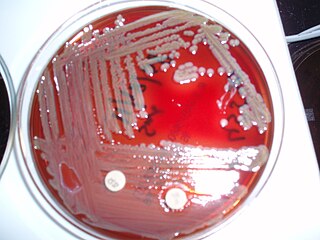
The class Gammaproteobacteria belongs to the Proteobacteria phylum and contains about 250 genera, which makes it the most genera-rich taxon of the Prokaryotes. Several medically, ecologically, and scientifically important groups of bacteria belong to this class. It is composed by all Gram-negative microbes and is the most phylogenetically and physiologically diverse class of Proteobacteria.

The class Flavobacteriia is composed of a single order of environmental bacteria. According to Bernardet et al., Flavobacteriia are Gram-negative aerobic rods, 2–5 μm long, 0.3–0.5 μm wide, with rounded or tapered ends that are motile by gliding, yellow colonies on agar, decompose several polysaccharides but not cellulose, G+C contents of 32–37%, and are widely distributed in soil and fresh and seawater habitats. In particular, Flavobacteriia are prominent members of marine biofilms. The type species Flavobacterium aquatile was isolated from a well in Kent, England.
Fictibacillus arsenicus, also known as Bacillus arsenicus, is a bacterium. It is Gram-positive, motile, endospore-forming, rod-shaped and arsenic-resistant. Its type strain is Con a/3T.
Neptunomonas japonica is a species of bacteria. It is Gram-negative, rod-shaped, non-spore-forming and motile by means of a single polar or subterminal flagellum. Its type strain is JAMM 0745T. It was first found in carcasses of a Sperm whale and is closely related to a symbiotic bacterial clone of the polychaete Osedax japonicus.
Neptunomonas concharum is a species of bacteria. It is Gram-negative, facultatively anaerobic, motile and rod-shaped, its type strain being LHW37T. This species was first isolated from a dead ark clam, hence the specific epithet "concharum", meaning "of the shells".
Neptunomonas qingdaonensis is a species of bacteria. It is Gram-negative, motile, aerobic, oxidase- and catalase-positive and rod-shaped. The type strain is P10-2-4(T).
Neptunomonas antarctica is a species of bacteria. It is Gram-negative, motile, facultatively aerobic and oxidase- and catalase-positive. The type strain is S3-22T.

Acidimicrobium ferrooxidans is a bacterium, the type species of its genus. It is a ferrous-iron-oxidizing, moderately thermophilic and acidophilic bacteria.
Chryseobacterium palustre is a bacterium. It is rod-shaped, non-motile, aerobic, catalase- and oxidase-positive and forms yellow colonies. Its type strain is 3A10(T).
Chryseobacterium soli is a bacterium. It is aerobic, Gram-negative, non-motile, yellow-pigmented and straight rod-shaped. Its type strain is JS6-6(T).
Chryseobacterium formosense is a bacterium. It is gram-negative, rod-shaped, non-spore forming and yellow-pigmented. Its type strain is CC-H3-2T. It was first isolated from the rhizosphere of a specimen of Lactuca sativa.
Demetria terragena is a bacterium. Its cells are gram-positive, not acid fast, non-motile, non-sporulating, irregular coccoid to short rod-shaped and microaerophilic. The type strain and the only strain of the genus and species is HKI 0089.
Microlunatus luteolus is a Gram-positive, non-motile, aerobic actinomycete. The type strain is FA1T.
Microlunatus lucidus is a Gram-positive, non-motile, aerobic actinomycete. The type strain is FA2T.
Microlunatus okinawensis is a Gram-positive, non-motile, aerobic actinomycete. The type strain is FB1T.
Microlunatus sagamiharensis is a Gram-positive, non-motile, aerobic actinomycete. The type strain is FB2T.
Gracilibacillus ureilyticus is a Gram-positive, halotolerant, neutrophilic, rod-shaped bacterium. MF38T is its type strain.
Cryobacterium psychrophilum is the type species of the bacterial genus Cryobacterium. It is an obligately psychrophilic, Gram-positive irregular rod-shaped actinomycete, with type strain JCM 1463.
Sphingomonas aerolata is a Gram-negative and psychrotolerant bacteria from the genus of Sphingomonas.
Neptunomonas is an anaerobic and rod-shaped genus from the family of Oceanospirillaceae.


